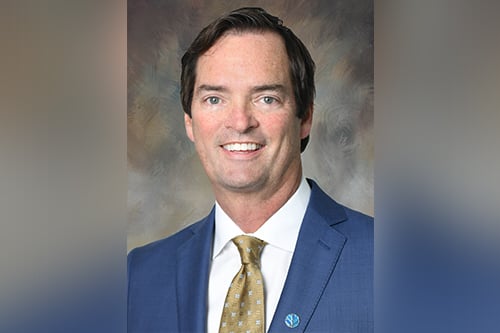Executive explains how non-QM lender navigated 2020 by staying hungry

Tom Hutchens (pictured) has to keep a lot top of mind. The executive VP of production at Angel Oak Mortgage Solutions helps lead the non-QM lending side of a business built for vertical integration outside the traditional agency channels. Operating in this space requires both education and a desire to educate. It requires savvy and a nose for opportunity. It requires self-belief and persistence. Tom Hutchens has all these virtues in spades.
Hutchens sat down with MPA to discuss his career to date, the lessons he’s learned, and the opportunities he sees for Angel Oak and the wider mortgage industry in a non-QM lending space that could be in the hundreds of billions of dollars. He shared how Angel Oak passed the tests of 2020 and what it means to work in the non-QM mortgage space with “skin in the game.”
“For the first three years of [Angel Oak Mortgage Solutions’] existence, all we did was educate the market. We educated people about who we were, how we did business, and why we were different,” Hutchens said. “In those early years we kept hearing ‘this is just subprime 2.0’…It was critical for us to be teachers of our model and show how it was going to be different this time, and seven years later I can report that we’ve proven ourselves right.”
Read more: LO crosses billion-dollar mark
Hutchens addressed concerns of ‘subprime 2.0’ by reminding those critics what subprime looked like. Where pre-2008 mortgages were underwritten to be saleable to investors, borrowers got loans with no down payment, lenders sold loans to Wall Street firms with little performance guarantee, and Wall Street sold bonds with no repercussions for poor performance. Nobody had skin in the game.
Angel Oak, Hutchens explained, does it differently. It lends at an average below 80% LTV. It then holds on to the loans through securitization. Vertically integrated and funded by investors, it’s in Angel Oak’s interest to make sure it captures market share, sure, but also to make sure it captures that market share sustainably.
Capturing market share is what Hutchens and his team have done this year. After closing over $3 billion in non-QM in 2019, they were subjected to the same sharp pause and deep uncertainty we all faced in mid-March. Investor readiness and strong relationships with the capital management side of Angel Oak, however, meant their pause topped out at 30 days. Lending again from April, Angel Oak managed to navigate the uncharted waters of COVID-19 thanks to its close connection with investors. They came up with restrictions their investors were comfortable with and rolled them out to borrowers in need of non-QM products.
Making those moves so quickly took coordination and communication - that’s where Hutchens really stepped up. His team of account executives across the country had questions and uncertainties of their own. Hutchens was on weekly Zoom calls, keeping his team apprised of high-level decisions and the shifting economic landscape from Angel Oak’s perspective. That team was able to move fast and close deals at a time when they really needed to be closed.
Read more: Nationwide Mortgage Bankers names new CMO
After moving through that chaos and difficulty, Hutchens feels like the team is back on track. Now he only sees room to grow for the non-QM space and expects 2021 to be a year when Angel Oak returns to the consistent near doubling of volume it had been doing up to 2019. Hutchens said that while Angel Oak has done impressive volumes, it’s only scratching the surface of the non-QM market. He believes that the market could be as large as $300 billion and sit between 5% and 10% of total origination volume. He believes too, after a year of tests and trials, that non-QM is here to stay.
“This year I received confirmation that non-QM is here to stay,” Hutchens said. “It would have been very easy for people to just let the pause continue, but there are a lot of borrowers out there who need a non-agency loan. There’s also the demand from investors for some yield. So, the biggest lesson that I’ve learned [in 2020] is that this model, if we continue to do it right and approve, fund and close good loans, this market is here to stay.”



